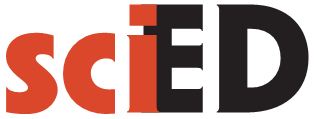Abstract
We are faced with chaotic processes in many segments of our life: meteorology, environmental pollution, financial and economic processes, sociology, mechanics, electronics, biology, chemistry. The spreading of high-performance computers and the development of simulation methods made the examination of these processes easily available. Regular, periodic motions (pendulum, harmonic oscillatory motion, bouncing ball), as taught at secondary level, become chaotic even due minor changes. If it is true that the most considerable achievements of twentieth century physics were the theory of relativity, quantum mechanics and chaos theory, then it is presumably time to think about, examine and test how and to what extent chaos can be presented to the students. Here I would like to introduce a 12 lesson long facultative curriculum framework on chaos designed for students aged seventeen. The investigation of chaos phenomenon in this work is based on a freeware, “Dynamics Solver”. This software, with some assistance from the teacher, is suitable for classroom use at secondary level.References
Caforio, A. & Ferilli, A. (1993). Physica 2. Firenze: Le Monier.
Dynamics Solver. Available at http://tp.lc.ehu.es/jma/ds/ds.html
Eichhardt, I. & Jaloveczki, J. (2008). Fizikázzunk egyszeruen, számítógéppel (Let’s study physics the simplest way: using only a computer). Fizikai Szemle, 2008(9), 311-315.
Eichhardt, I. & Jaloveczki, J. (2009). Numerikus módszerek a diákköri munkában (Numerical methods in students’ circle work). Fizikai Szemle, 2009(10), 348-351.
Gleick, J. (1988). Chaos. Making a new science. Penguin Books.
Jaros, A., Nussbaumer, A. & Kunze, H. (1999). Basiswissen Physik-compact. Wien: Öbv&hpt.
Ott, E. (1993). Chaos in dynamical systems. Cambridge University Press.
Planck, M. (1958). Physikalische Abhandlungen und Vortrage. Braunschweig: Friedrich Vieweg und Sohn.
Szatmári-Bajkó, I. (2010). Káosz, rend, látvány. Iskolakultúra, 2010(1), 116-131.
Szatmári-Bajkó, I. (2006). „Káoszt”? – azt! (Some chaos? Yes, let us have it!), Fizikai Szemle, 2006(11), 376-380.
Tél, T. & Gruiz, M. (2006). Chaotic dynamics. Cambridge University Press.
Tellmann, J., Darvay, B. & Kovács, Z. (2006). Fizika XI. Ábel Kiadó.
Violino, P. & Robutti, O. (1995). La fisica e i suio modelli, Volume 3. Bologna: Zanichelli.
Authors who publish with this journal agree to the following terms:
- Authors retain copyright and grant the journal right of first publication with the work simultaneously licensed under a Creative Commons Attribution License that allows others to share the work with an acknowledgement of the work's authorship and initial publication in this journal.
- Authors are able to enter into separate, additional contractual arrangements for the non-exclusive distribution of the journal's published version of the work (e.g., post it to an institutional repository or publish it in a book), with an acknowledgement of its initial publication in this journal.
- Authors are permitted and encouraged to post their work online (e.g., in institutional repositories or on their website) prior to and during the submission process, as it can lead to productive exchanges, as well as earlier and greater citation of the published work (See The Effect of Open Access).
